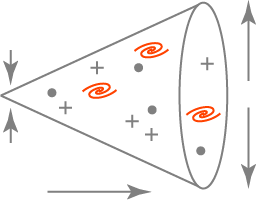Greetings readers,
There are some big questions we all have: about life, about the Universe, and about our own society here on planet Earth. While I don't have all of the answers (and almost certainly never will), my goal is always the same: to bring you the best understanding we have about the world, the Universe, and anything that falls within the realm of science at present.
This week, in that regard, was no different. We've got a new podcast on disintegrating exoplanets and what we learned by imaging one for the first time with JWST. We've seen our picture of the Universe — a dark-matter- and dark-energy-dominated Universe beginning with the inflationary hot Big Bang — come into question in recent years, and it's truly amazing how far our knowledge has advanced throughout the 21st century so far. At the same time, we're searching for our first signs of life beyond Earth, and yet the hunt for signatures of nuclear fission might lead us to a natural nuclear reactor, rather than an intelligently created one. And driven by the response to my last piece on the origins of COVID-19 and gain-of-function research, I've taken on the question of COVID's origins by calling in an expert for this week's Ask Ethan.
All this, plus stories on how astronomers underestimated the brightness of the night sky and whether the Sun will (or won't) make a planetary nebula when it dies, for your intellectual nourishment here on this week of Starts With A Bang!
All the best, Ethan |
|
|
|
 |
STAR LIGHT, STAR BRIGHT |
|
|
|
|
The most famous Hubble images show glittering stars and galaxies amidst the black backdrop of space. But starlight was oversubtracted in earlier imagery, and a new analysis shows that the sky is actually brighter than we thought. |
| READ MORE |
|
|
|
 |
NEW INSIGHTS |
|
|
|
|
Twenty-five years ago, our concordance picture of cosmology, also known as ΛCDM, came into focus. Things looked great, but not everything lined up. Today, those three types of data sets — supernova data, CMB data, and large-scale structure data — aren’t all mutually compatible. Here’s why cosmology may be ready for a breakthrough. |
| READ MORE |
|
|
|
|
|
 |
FROM OUR FRIENDS AT HEAR.COM |
|
|
|
What if you could hear every detail of life–and no one would ever know your secret? Horizon IX hearing aids by hear.com are designed to feel effortless—they're tiny and the sound is so clear and natural, you’ll forget you’re wearing them. Start your 45-day no-risk trial. |
| CHECK IT OUT |
|
|
|
|
|
 |
ASK ETHAN |
|
|
|
|
In theory, scientists could’ve produced a deadly virus that accidentally infected lab workers. In practice, we know that didn’t happen. However, surveys suggest that a majority of Americans believe SARS-CoV-2 came from a lab instead of a natural origin. That’s completely refuted on scientific grounds, and everyone should know why. |
If you have a burning question about the Universe, send me an email. |
| READ MORE |
|
|
|
 |
A DYING STAR |
|
|
|
|
|
|
|
 |
MYTH BUSTER |
|
|
|
|
Planets can create nuclear power on their own, naturally, without any intelligence or technology. For Earth, the naturally occurring amount of U-235 is too low at present; we have to enrich what we find to have sufficiently large U-235/U-238 ratios. But 1.7 billion years ago, this wasn’t the case. We have evidence that Earth possessed the right conditions for a natural nuclear reactor, putting a halt to the notion that nuclear reactions on an exoplanet guarantee life. |
| READ MORE |
|
|
|
 |
THE PODCAST |
|
|
|
|
Exoplanets can exist anywhere around their parent stars, even so close that they evaporate or disintegrate. It was almost 15 years ago that we found our first candidate disintegrating, rocky exoplanet, but the story has changed dramatically in recent years. Here’s how we’ve caught our most compelling one yet right in the act! |
| READ MORE |
|
|
|
|

